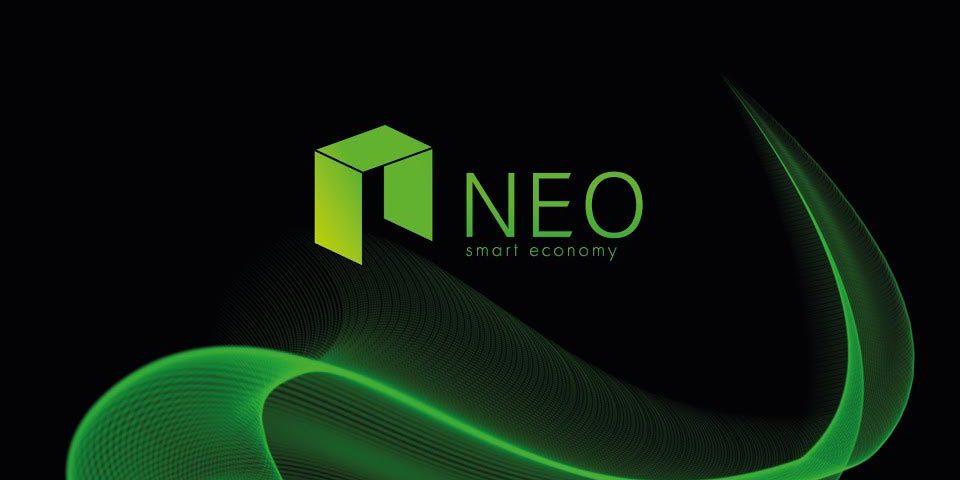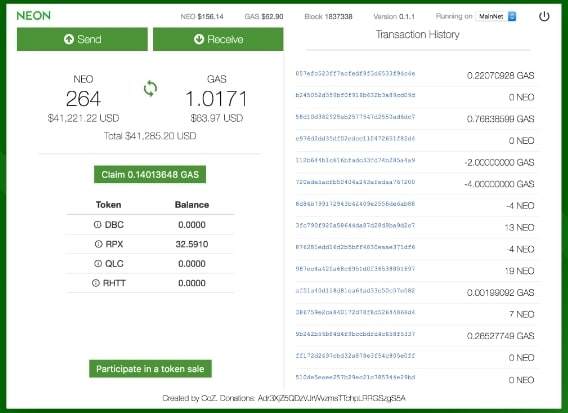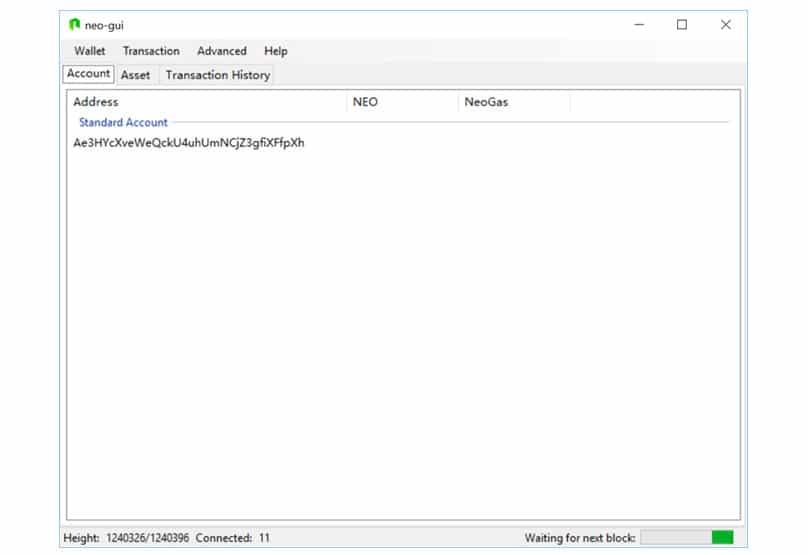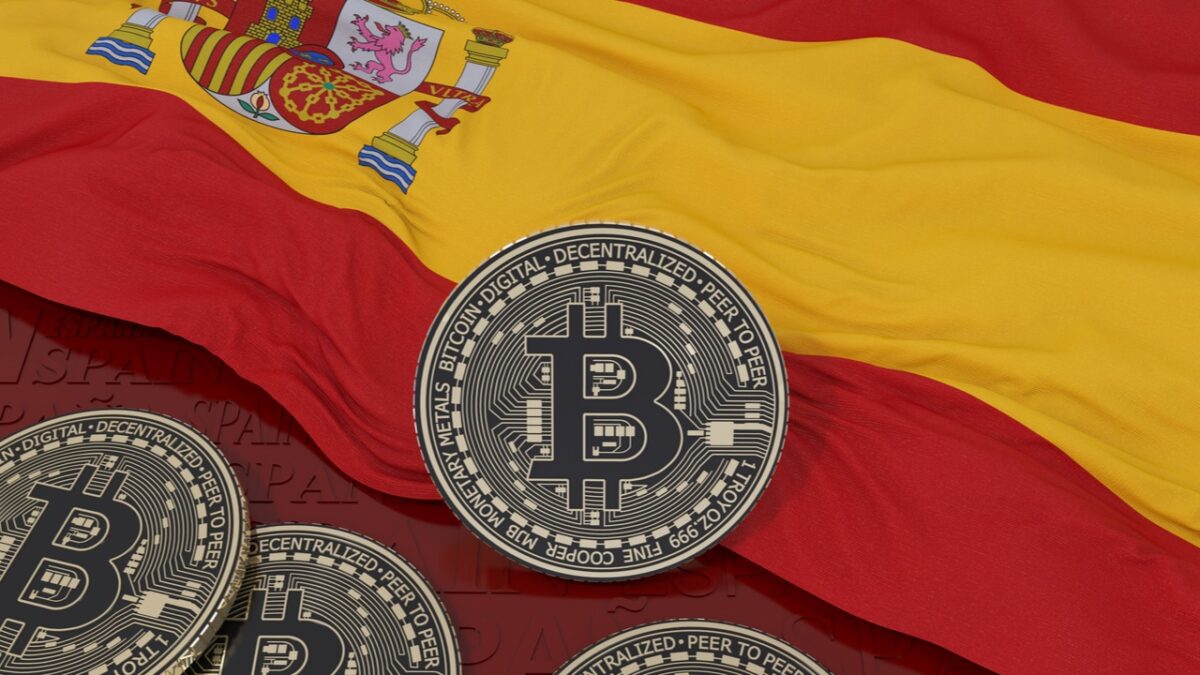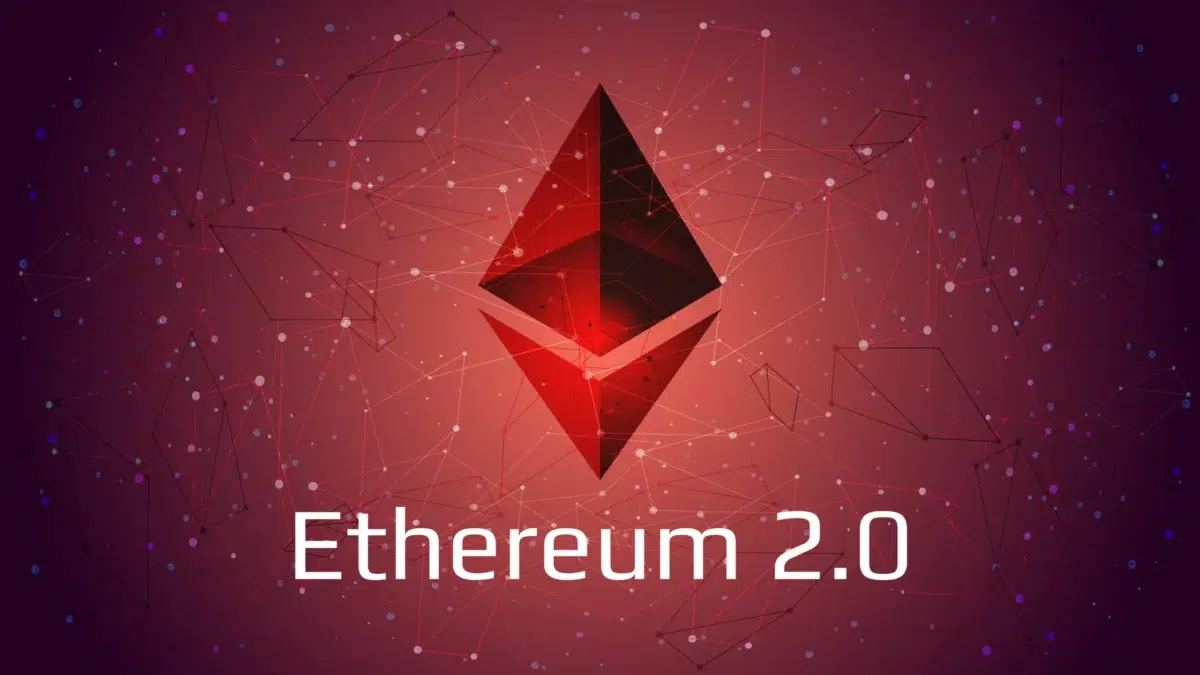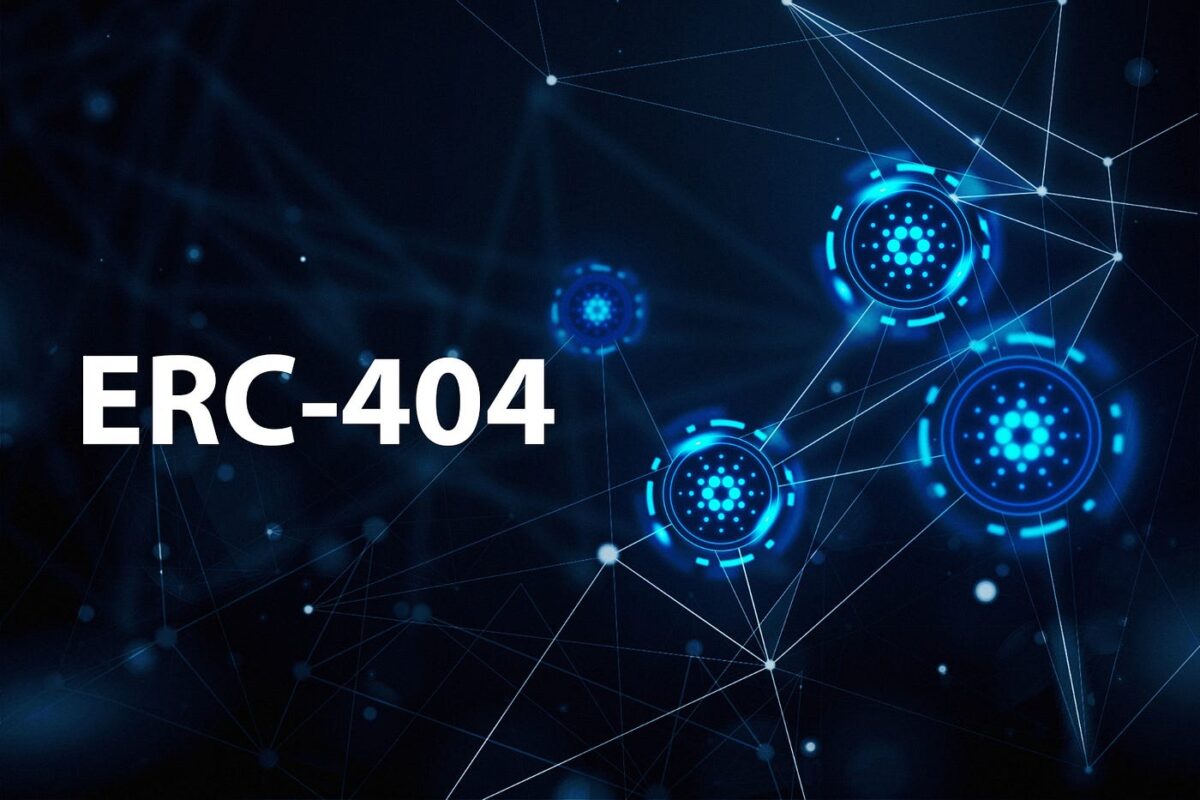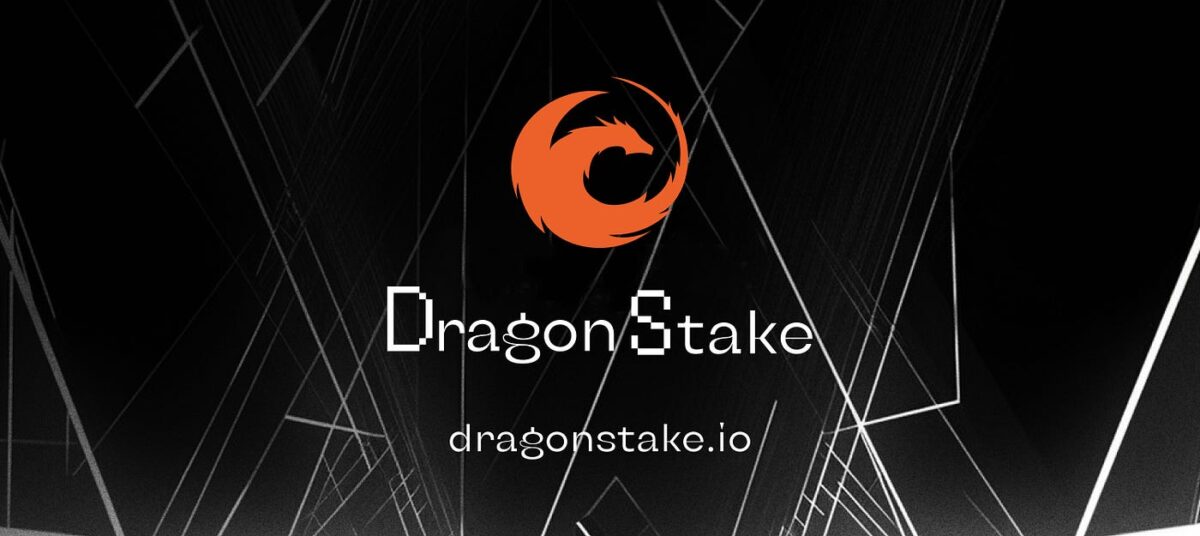The world of cryptocurrencies has become a thick jungle. The concept of "Bitcoin" has begun to penetrate deeply into the depths of society, but the issue of Blockchain is beginning to unfold its potential and has become a universe of possibilities. After this maelstrom, bright and colorful glass beads emerge that resemble diamonds and, in some cases, perhaps they are. The future is unpredictable but this quality has always fascinated us. And, naturally, we can't help but make bets looking for in each one of them the golden fleece or the touch of King Midas that will make our lives more pleasant. Investing in cryptocurrencies is the new El Dorado and, some of these treasure maps today point to Neo.
What is NEO?
To understand Neo we must take a look at Ethereum. After all, there are those who say that Neo is the Chinese Ethereum and some reason will not be lacking. Neo is an ecosystem based on a Blockchain on which smart contracts are executed, like Ethereum. But, logically, Neo aims to be something else that surpasses Ethereum itself and solves some of its current drawbacks such as the scalability problem that is a shadow that still hangs over the mother of smart contracts. For example, Ethereum can process approximately 15 transactions per second. Theoretically Neo can process around 1000 or even 10.000 transactions per second by making some adjustments here and there.
To briefly define it: Neo wants to be a registry and market of digital goods with smart contracts. A system that allows real-world assets to be digitized, allowing registration, deposit, transfer, negotiation, clearing and settlement through a decentralized and secure network. Neo can maintain fully reliable records of digital asset transfers associated with smart contracts. Any type of asset is capable of being digitized to be exchanged, bought, sold, distributed or even modified by faithfully following the rules agreed in said contract.
The platform has the potential to be applied in areas such as crowdfunding, equity trading, loans, loyalty programs, private equity funds, supply chain financing, and much more.
It is not essential to understand the technical complexities that Neo will have to solve in order to decide to invest, but it is always highly advisable to have some idea of what it is about to approach the matter with due intelligence. My proposal is that we can have enough knowledge to be able to decide how interesting and how many possibilities for the future it has.
One platform, two tokens
The platform works with two tokens: Neo and Gas. Both with a quantity of 100.000.000 units. Neo is not divisible and Gas is. Those who own Neo acquire voting rights on the platform and also receive dividends in the form of Gas which is produced at the rate of 8 Gas per block. This production will decrease at the rate of 1 Gas for every 2 million blocks until reaching 100 million, around the year 2039, at which time they will cease to be produced.
Gas is used to implement and execute smart contracts according to rates proportional to the computational resources consumed by the contract. These commissions are distributed to the validator nodes as a reward for their activity on the network.
Wallets for Neo and Gas
The Neo community has developed an interesting variety of wallets or purses which, for the most part, serve to manage both Neo and Gas. As a wallet for desktop and MasOS, Windows and Linux operating systems we have NEON which falls into the category of light wallets since it does not need to download the entire Blockchain.
NEO-GUI it is a full node as it must be synchronized with the entire Blockchain and therefore requires a large amount of disk space.
NEO WALLET is another lightweight wallet that, although it runs in the browser, keeps files and private keys on the device itself.
There are also Neo wallets for Android and iOS as well as a Neo paper purse generator.
Saving your Neo in your own wallet allows you to receive the Gas rewards that these Neo generate. Keep in mind that if you keep your Neo in an Exchange, the Gases that correspond to you can be kept by the Exchange itself, although this is not always the case; for the moment Binance it does deliver the Gas generated to its users who have Neo on said platform.
NEO wasn't always NEO
The first Chinese Blockchain platform was born in 2014 under the name of AntShares. Three years later, in 2017, the name and brand changed to Neo. Apparently they are looking for a name more in line with their objectives since Neo comes from the Greek and refers to new, novel or even young. Behind this rebranding there is, actually, an attempt to establish trusting relationships with the Chinese government and the private companies that sponsor or support this project, including Microsoft China, Coindash or the cryptocurrency exchange Binance, among others. Microsoft even claimed that OnChain, the company behind Neo, is "One of the 50 emerging companies in China". But beware, Microsoft is not the oracle of Delphi either.
The Chinese government has always behaved like a sword of Damocles for the world of cryptocurrencies. So Neo has not been defined in any case as a cryptocurrency but as a Blockchain protocol. In reality, any Blockchain-based cryptocurrency is practically a Blockchain protocol. And vice versa, a Blockchain protocol is or can be a cryptocurrency as long as the token or tokens generated from it can be transferred and used as money. But the Chinese government seems to go for formalities more than semantic niceties. For Neo it is essential to be on good terms with China since it is its main field of action and objective. So much so that, for the moment, they have not even bothered to translate the Neo main website to another language.
Cooperation with the Chinese government is essential for the development of its roadmap since the main point in the development of your digital asset platform or financial platform is that it is totally reliable. Values transfers and smart contracts in Neo require fully secure electronic signatures based on absolute trust. That is why Neo is developing an identity system that certifies transactions. Since 2005, the Chinese "Law on Digital Signatures" allows such signatures to be legally binding. Therefore, in Neo these signatures will be associated with a totally reliable identification that includes cryptographic signatures as well as biometric personal identifications, fingerprint, voice recognition and others. Digital identity is a key factor in the development of Neo since it will establish a bond of trust between digital assets and the physical entities that issue them, thereby effectively preventing fraud and complying with the law, for example, preventing money laundering. It is also definitely important in relation to the different documents that can be stored on the Neo Blockchain such as contracts, intellectual property certificates or medical records.
The problem of the Byzantine generals.
One of the peculiarities of Neo is that its algorithm is not based on the well-known Proof of Work or Proof of Stake but on a completely new one that aims to solve in another way the question of the trust and validation of the transactions that are written in the blocks. of its chain and that they name dBFT (delegated Byzantine Fault Tolerance) or «Delegated Byzantine Fault Tolerance». The name comes from a informatical issue already classic whose resolution has entertained us for years. Basically the question is the following:
Imagine that a city is besieged by n number of generals. They must agree to attack or retreat. There is one who acts as the commander in charge of giving the order and a certain number of lieutenants who receive it and communicate it to each other to confirm it. They should all act in unison. The problem arises if any of them is a traitor. It can be the commander giving contradictory orders to different generals, it can be a general who falsely affirms to another general that he has received an order that contradicts the one that he has received. In short, it is necessary to have response algorithms that resolve the situation in case of doubt or, also, when someone has not received the message. The option (attack or retreat) that is carried out is the one that has more than 50% of the votes.
In practice, a consensus on the Neo blockchain must be given, for example, when a token exchange is carried out as established in a smart contract. Imagine that we are doing a transaction based on a contract: I send you X tokens A and you receive them when you have uploaded Y tokens B to the Blockchain. Once you have received them, I can access and take possession of those that you have uploaded. It is clear that everything must happen according to a certain sequence. If you receive my A tokens before having entered your B tokens, the failure is evident. That is why it is very important that the nodes agree on how the sequence should be and that no failures can occur.
In Neo the number of transactions that can be carried out per second is much higher than in Ethereum. Among other reasons because the validations do not have to be done by all the nodes. Actually users choose a group of nodes to be in charge of reaching consensus. One of them checks that everything is correct and sends its verdict to the delegated nodes so that they can vote if they agree with that decision. As I said, the consensus is reached with two thirds of positive votes. And if not, the process has to be repeated by choosing another node to do the initial verification or calculations. In other words, a scenario similar to that of the problem of the Byzantine generals arises.
Apparently the dBFT algorithm solves the problem of malicious delegates or simply that some of them do not communicate for something as trivial as the power has been cut. I say apparently because in practice crashes have occurred precisely because a node went offline during the consensus process.
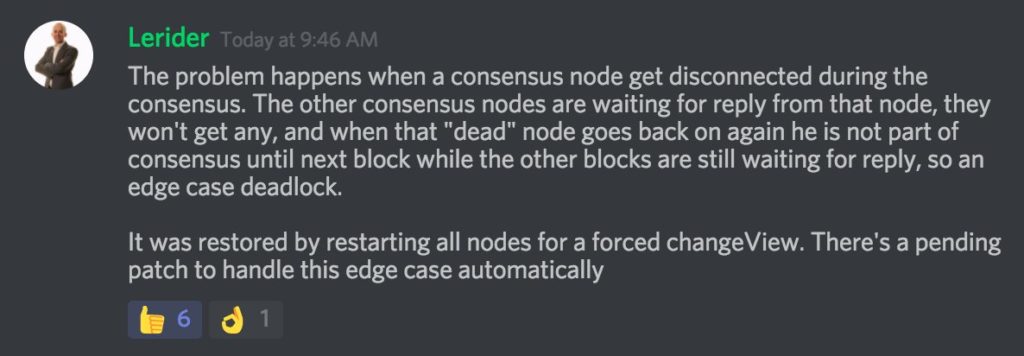
And this, in a cryptocurrency with a market capitalization of $ 5.908.142.500, seems a bit funny. Therefore, it must be remembered that although it basically works, its development is still at a very early stage.
What is working?
With the particular characteristics that I have described so far we have a cryptocurrency that functions very similar to Ethereum. Smart contracts can be programmed and executed by contributing GAS (see What is Ethereum?). On the Neo Blockchain you can also program dApps, applications based on smart contracts. There are currently around 38 dApps developed by OnChain or by third parties. Anyone can build dApps on top of the Neo Blockchain. On Ethereum, of course, you can also program dApps and currently several thousand work on that network but it must be borne in mind that Ethereum has already been working for three years. Neo's roadmap wants to aim for something higher.
What is expected?
El Neo whitepaperMore than a technical document, it is a declaration of intent. I do not pretend to be picky but a little more depth in the concepts would have been appreciated. Based therefore on their roadmap, they are expected to make some or all of these features functional.
- Superconducting Transactions (superconducting transactions). A concept similar to Lightning Network that other cryptocurrencies are trying to implement, including Bitcoin and that would allow the implementation of decentralized financial markets but with the security of centralized ones. Basically it is that a transaction is saved in a parallel chain until the condition of a smart contract is met. This eliminates the need for third parties to guard a security (scrow). And, in addition, it favors the scalability and speed of the entire system.
- NeoX. It is the equivalent of Atomic Swaps or exchanges between different Blockchains. A fundamental implementation to allow transactions between different cryptocurrencies or digital assets. It is not very clear what the technical basis for this will be in Neo.
- neofs. It is a protocol that allows large files to be divided and distributed throughout the entire network creating a kind of decentralized "Dropbox". According to their specifications, users could choose the degree of reliability with a higher cost if high resilience is sought by storing these files in the most reliable nodes of the network.
- NeoQS. It's okay for us to think about possible future disasters. quantum computing is a reality, still in its infancy and with few practical applications but, you know ... "Science anticipates that it is outrageous". And if quantum computers become functional with a processing capacity founded on a sufficient number of Qubits, few systems in the world would be truly safe, including those in the entire banking infrastructure. Neo wants to solve this dilemma by creating a system resistant to quantum computers and which he has called Quantum Safe (QS) or a grid-based cryptographic mechanism. At the moment, as a marketing operation it is not bad.
The question is who will get the biggest piece of the cake
Neo has to compete to occupy his space against a giant that is overtaking him in age and popularity, which is, obviously, Ethereum. At the developer level Neo offers the advantage of supporting different programming languages like C #, VB.net, Java, Kotlin and some other while Ethereum uses its own proprietary language called Solidity which requires additional learning from programmers. Still, the difference in the number of dApps and smart contracts running is overwhelmingly greater on Ethereum. But, of course, you have to take into account the age difference. At some points, Neo seems to take somewhat inconsistent steps, not sufficiently documented, although his ability to generate enthusiasm in his community and carry out practices to energize it is undeniable. In other words, in marketing Neo knows what it is doing. As for the development itself, it does not seem as solid as the cards that the overwhelming creative personality of Vitalik Buterin with Ethereum always pulls out of his sleeve.
Neo has been able to attract large and small investors with its system of rewarding those who have Neo with GAS. Neo's initial distribution has been totally centralized since all existing Neo were pre-finished and are serving very effectively to finance the project. What mainly attracts small investors who, perhaps, do not care too much about knowing the project but are following impulses to the rhythm of hype (hype, the Anglo-Saxons tell it) is the simplistic thought that, being its emission limited to 100 million of Neo and as many of Gas that you are receiving simply by having Neo in a wallet, the investment is round. As the use and implementation of this platform increases, its value must grow exponentially. And the conclusion, actually, is the real key to the matter: Will Neo grow as we imagine?
It's not just Ethereum occupying this ground. There is also Ethereum Classic, Waves or Nxt, among others. Furthermore, not everyone will be equally happy using a platform so committed to a government like the Chinese one and large private companies. Let's think that the world of Exchanges, digital asset markets and the creation of tokens on very or totally decentralized platforms is now taking its first and promising buds, even with projects much more friendly to the so-called "Western" culture such as, for example, Lescovex.
En general, these types of platforms are still very far from their practical use at the current user level so, without a doubt, I can prophesy that the one who manages to speak a language that is understood at the street level has many options to succeed. There are two ways: that of establishing itself at large companies and that these create user-friendly options and that of reaching ordinary people in the first instance, which, without a doubt, would be a shortcut towards the goal of usability.
Neo is closer to the big Asian market. But It is still too early to say that the world is going to eat.

